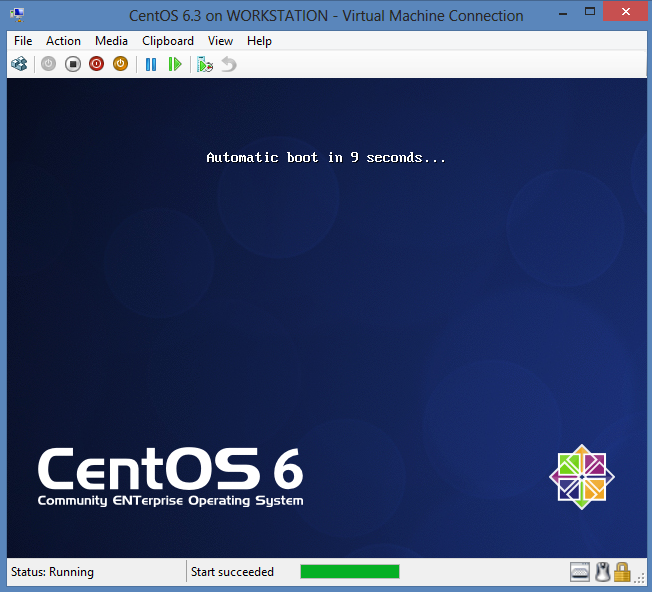This week CentOS 6.5 was released. CentOS releases tend to follow RedHat Enterprise Linux (RHEL) releases so this CentOS 6.5 release follows the release of RHEL 6.5. Interestingly enough, RHEL 6.5 was released on November 21, 2013 while CentOS 6.5 was released on December 1, 2013. This is only a ten day latency, one of the shortest delays achieved for the distribution.
We have already confirmed some useful new changes in CentOS 6.5 such as support for the Intel i354 network adapter found in many Avoton and Rangeley platforms. Here are some of the key changes in this release:
[tabgroup][tab title=”Key Changes in CentOS 6.5″]
- The Precision Time Protocol – previously a technology preview – is now fully supported. The following drivers support network time stamping: bnx2x, tg3, e1000e, igb, ixgbe, and sfc.
- OpenSSL has been updated to version 1.0.1.
- OpenSSL and NSS now support TLS 1.1 and 1.2.
- KVM received various enhancements. These include improved read-only support of VMDK- and VHDX-Files, CPU hot plugging and updated virt-v2v-/virt-p2v-conversion tools.
- Hyper-V and VMware drivers have been updated.
- Updates to Evolution (2.32) and Libre Office (4.0.4).
[/tab][/tabgroup]
Beyond these changes the CentOS team has also compiled a list of issues, of which here is a selection from that list:
[tabgroup][tab title=”Select Issues Reported in CentOS 6.5″]
- Up to version 4.3.4 of VirtualBox the building of the openGL module will fail. This will probably be solved in a future release of VirtualBox.
- On Intel and AMD based processor architectures, CentOS 6 requires PAE support for 32-bit x86 chips, following the upstream’s requirement
- The installer needs at least 406MB of memory to work. Text mode will automatically be used if the system has less than 632MB of memory.
- The text installer has limited capabilities compared to the GUI installer. Most notably there is no support for configuring partition layout, storage methods or package selection. Please refer to the official documentation for details. Here you can find some useful information on creating and using kickstart files which can be used to perform advanced configuring without the need for the GUI installer.
- Content for both the i386 and x86_64 architectures is split into two DVDs. We have tried to get all basic server and basic desktop installs only from DVD-1.
- Many people have complained that Ethernet interfaces are not started with the new default NetworkManager tool.
- The full x86_64 install and the minimal ISO are bootable on EFI-hardware
- The proprietary drivers for older AMD (former ATI) video cards, namely the 2xxx, 3xxx and 4xxx series (both integrated in motherboards or standalone cards) are not compatible with the new version of the X server introduced in CentOS-6.4. As of mid-March 2013 the only known workaround allowing the use of the proprietary drivers is to downgrade the X server (xorg* packages) to the versions available in CentOS 6.3. More details about the extensive investigation around this issue is available here. Make sure that you do not allow yum to upgrade again the packages that have been downgraded by adding the following to the end of /etc/yum.conf
exclude=xorg*
Note that use of proprietary drivers was never needed for CentOS-6 if all you wanted was a dual-monitor setup. See this FAQ entry for more details on using a dual-monitor setup.
- There may be some i686 RPMs that are no longer available on the x86_64 media. If you have any of the following i686 RPMs installed on your x86_64 system, please remove the i686 RPMs before attempting to upgrade: dovecot-devel, evolution-mapi, evolution-mapi-devel, iscsi-initiator-utils, iscsi-initiator-utils-devel, openchange, openchange-devel, python.i686.
- One can do USB key installs by using dd to copy individual ISO files to a USB key using the device name (not the partition name). This will overwrite the entire USB key. Here is an example for the DVD1:
dd if=CentOS-6.5-x86_64-bin-DVD1.iso of=/dev/sdb
- There is an issue running Microsoft Windows on VMware Workstation using glib2-2.26.1-3 and kernel-2.6.32-431 (included in CentOS-6.5).
[/tab][/tabgroup]
You can get CentOS 6.5 here and read the release notes here.





It all seems to work, inc RAID on an ASUS CROSSHAIR Formula V MB with the AMD RAID.
Although my Opensolaris wont even install onto a RAID partition or non-RAID disk. Also no support at all.
So well done. keep up the good work.
And Thanks.
Sean
.